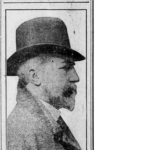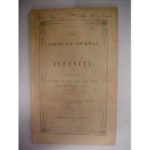Insanity is an elusive condition, and alienists (early psychiatrists) spent time and effort studying ways to detect it. In an article in the October, 1865 issue of the American Journal of Insanity, Dr. John Tyler admitted that “men differ so widely in their conduct and habits, that what would be manifest insanity in one man, might only be the natural and healthy and common conduct of another.” He also noted that insanity could be recognized more easily than described…one could look at deviations in a person’s normal behavior and recognize insanity. It was much more difficult to describe the person’s insanity in absolute or factual terms, however.
That did not stop Tyler from going on to give some guidelines for assessing insanity in a person:
1. Though he may not abandon friends or former occupations, the insane person begins to see the world and hold ideas only through his own inner lens or “personal laboratory.” Tyler said that these convictions were “coined by him, and not received by another.” That person will be inwardly convinced of something, rather than persuaded to it by outside facts or situations.
2. The madman is inconsistent. Tyler described a patient who insisted he was dead, yet ate, talked, and did other things inconsistent with being dead.
3. The insane person will have a “changed and peculiar expression of the countenance, of the eye, of the manner, movements, attitudes, etc.” Tyler admitted that this type of proof was hard for the layperson to recognize, but that it could be learned through “an acquaintance and domiciliation [sic] with the mentally diseased.”
There was certainly a prevalent belief at that time that a trained professional could detect an insane person just by looking at him. Eccentricity or a vibrant personality may have been a bit dangerous under the watchful eye of one of these self-confident alienists.








